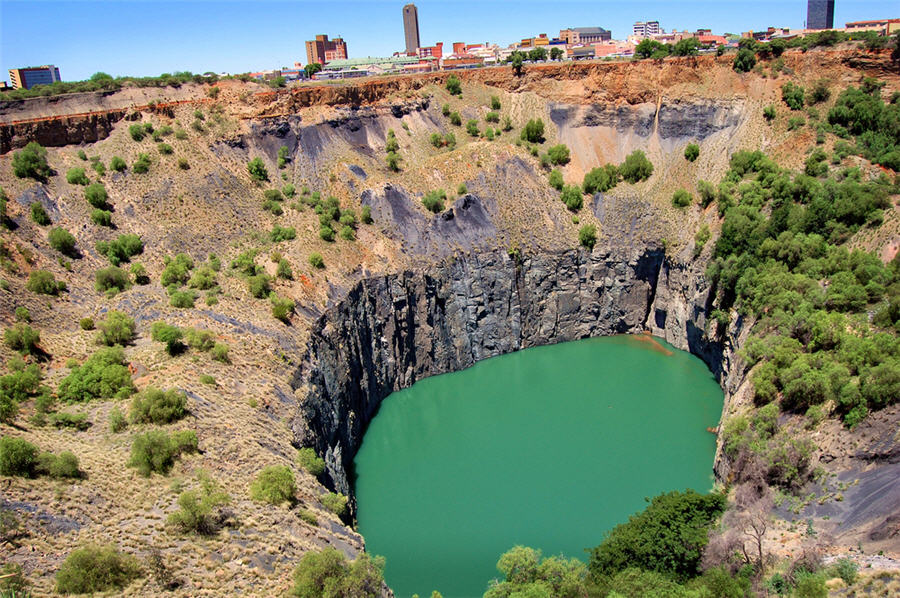
By Tom Henry and Michael Sherman
The California State Mining and Geology Board (“Board”) recently took its first step to revise California’s backfill regulation that applies to the reclamation of open pit metallic mineral mines. On December 14, 2017, the Board voted to review the backfill regulation after hearing public comments as to why the regulation has increased, rather than reduced, environmental impacts associated with mining. The Board and the State Division of Mine Reclamation plan to hold several public meetings in 2018 during which it will hear comments from the mining industry and other stakeholders. The Board is expected to adopt revisions to the backfill regulation later this year.
The current backfill regulation has severely curtailed metallic mineral mining in California since it was adopted in 2002. The backfill regulation has two key requirements for open pit metallic mineral mines. First, the regulation requires all new open pit excavations to be backfilled to the original surface elevation as part of reclamation. Second, any excess material must be graded so that the resulting topography does not exceed the pre-mining surface elevation by more than 25 feet.
The regulations were originally adopted in 2002 in an action that has been described as using an atomic bomb to kill a mosquito. The mosquito in this case was Glamis Gold’s proposed Imperial Project, an open pit gold mine in Imperial County, California. The project was highly controversial within California. The project, which was located on federal lands, was originally disapproved by the federal Bureau of Land Management (“BLM”) in January 2001 during the last days of the Clinton administration. The BLM cited several key factors in reaching its decision, including the project’s impacts on Native American resources, unavoidable visual impacts and inconsistency with the federally designated California Desert Conservation Area (“CDCA”), an area within the Mojave Desert.
However, the Bush administration reversed the January 2001 decision and approved the Imperial Project in November 2001. In response, the State took several steps to prevent Glamis Gold from mining. First, on December 18, 2002, the Board adopted an emergency backfill regulation. The emergency regulation ostensibly would have reduced the impacts from the Imperial Project by returning the mined site to a condition close to what it was before mining. However, the practical, and likely intended, effect was to make the mine economically infeasible. Unfortunately, the regulation was adopted to apply to all new metallic mineral mines within the entirety of the State.
The California Legislature then acted in 2003 to adopt similar changes to the State’s Surface Mining and Reclamation Act, the statute that regulates mining in California. The Legislature’s changes were similar to the regulatory changes adopted by the Board with one critical difference. The statutory restriction only requires the backfilling of metallic mine pits when the mine is located within one mile of a Native American sacred site and within the CDCA in an “area of special concern.” The Imperial Project met both of these requirements under the backfill statute.
Even though the California Legislature’s changes were much more limited than the regulations previously adopted by the Board, the Board never amended the backfill regulation to encompass only those limited areas within the CDCA covered by the statute. Instead, the backfill regulation continues to apply to any new metallic mineral mine within the State.
Besides halting the Imperial Project, the backfill regulation had an immediate, detrimental impact on proposed metallic mineral mine projects in California. Only one metallic mineral mine has been approved under the new requirements in the 15 years since the regulation was adopted. That project, Golden Queen’s Soledad Mountain Mine, provides a good illustration of the problems posed by the regulation. In order to comply with the requirement to reduce all mined material to within 25 feet of the original topography, the mine’s reclamation plan requires reducing ore heaps to within 25 feet of the original contour by removing potentially hazardous material from a lined facility and spreading it over an otherwise undisturbed area of approximately one square mile. Other additional impacts include steep increases in air emissions, including greenhouse gases, associated with having to move mined material twice.
Other proposed project proponents have also struggled with the question of whether other material such as hazardous tailings would have to be deposited in an open pit, e.g., in the situation where there is insufficient material to backfill the pit.
Regulators eventually began to reassess the backfill regulation. The authors of this article, along with representatives of Golder Associates, provided a presentation to the Board in 2015. We reviewed the impacts associated with the backfill regulation and encouraged the Board to require backfilling and ore heap reduction only when an analysis under the State’s environmental review law, the California Environmental Quality Act, indicates that those options would be the best environmental option when compared with partial backfill or no backfill alternatives. In effect, the present requirements have elevated aesthetic concerns above all other impacts and effectively prevented agencies from approving alternatives that scientific analysis indicates would result in fewer environmental impacts. We have also encouraged the Board to preclude certain actions in all instances by, for example, not obligating mines to use tailings as pit backfill materials.
The Board committee responsible for amending regulations, along with the Division of Mine Reclamation, will begin scheduling three public workshop meetings in the next several months. The committee will also seek written comments from interested stakeholders, including the mining industry.
Tom Henry is a partner in the Environment, Land Use and Natural Resources group at Stoel Rives LLP specializing in land use, mining, and oil and gas matters. He can be reached at [email protected]. Stoel Rives Partner Michael Sherman’s practice focuses on land use, transactional, and federal and state wildlife issues for developers, farmers, and mining and oil and gas companies. He can be reached at [email protected].